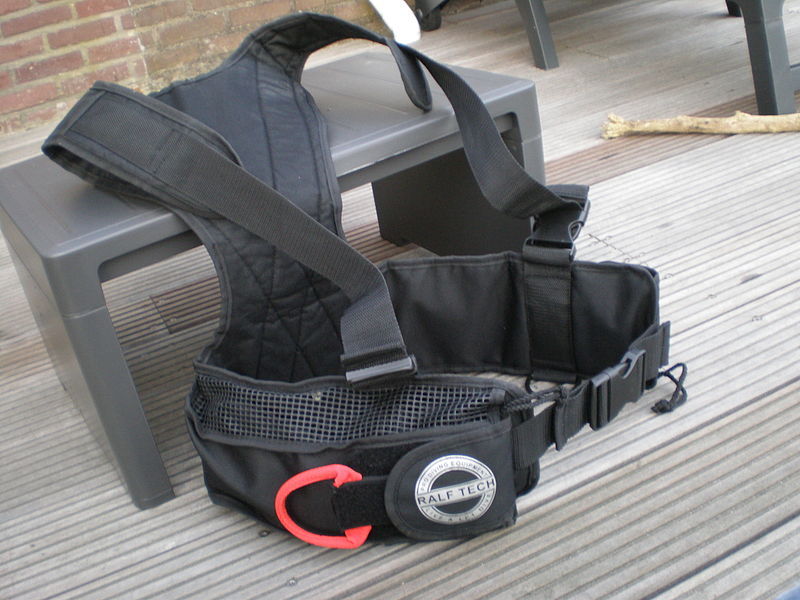A weight belt is an essential piece of scuba diving equipment designed to help divers achieve and maintain proper buoyancy underwater. This fundamental tool counteracts the natural buoyancy of the human body and diving equipment, allowing divers to descend and maintain desired depths efficiently.
Key Takeaways
- Weight belts are standard gear in diving that help control buoyancy underwater.
- They combine a sturdy belt (typically nylon, rubber, or pocketed designs) with lead weights and feature a quick-release mechanism for emergencies.
- The weights counteract the natural flotation of a diver’s body and gear, enabling smooth descents below the surface.
- Modern variations range from classic belt designs to weight-integrated BCDs (buoyancy compensator devices).
- Divers can fine-tune their ballast based on exposure suit type, water conditions, and kit configuration.
Purpose and Basic Function
Weight belts are standard equipment in scuba diving that offset positive buoyancy and enable controlled submersion. The gear helps aquanauts achieve neutral buoyancy for proper depth management during plunges.
The system goes beyond basic ballasting by allowing divers to adapt their weighting based on varying factors like exposure suit thickness and water salinity. Through strategic weight placement, underwater explorers maintain proper trim while the quick-release buckle serves as a safety mechanism for rapid ditching if needed. Divers with varying levels of lung capacity, typically 4.7 to 5 liters in males, require different weight amounts to achieve optimal buoyancy control.

Types of Weight Belts
Four main weight belt systems are available to underwater explorers: nylon, rubber, pocket, and integrated designs. Traditional nylon belts utilize webbing with quick-release buckles and slotted lead weights, making them standard gear for dive operations. Rubber belts, preferred by aquanauts, contract during descent and provide solid weight retention. Pocket systems feature form-fitting pouches that house both solid and soft weights while maintaining comfort during submersion. Integrated weight systems, built directly into BCDs (buoyancy control devices), offer a streamlined configuration without an external belt. Each design caters to specific diving requirements, from recreational plunges to technical descents. Many divers select their weight belt systems based on how the weights distribute, as even weight distribution helps prevent discomfort on the back and hips.
Benefits for Divers
Weight belts serve aquanauts with practical benefits during subsurface exploration. Their adaptable design enables trimming by adding or removing ballast according to dive conditions and exposure suit requirements. The economical pricing, versus integrated BCD systems, appeals to cost-conscious underwater enthusiasts.
The broad compatibility features make weight belts usable with virtually any diving equipment setup. These accessories enhance dive control and safety by maintaining neutral buoyancy and preventing uncontrolled ascents. Constructed from materials like rubber and nylon, each type offers distinct advantages – rubber variants provide automatic depth compensation while nylon versions offer durability. When properly positioned, weight belts assist in achieving optimal trim and streamlined profile, reducing water resistance during descents and underwater navigation.
Common Weight Belt Challenges
Traditional weight belts present four main issues for underwater activities. Poor weight distribution and adjustment problems can impact diver safety during descents and ascents. The concentrated load affects spinal alignment, especially when wearing exposure suits. Wetsuit compression causes weight belts to gradually loosen and shift position as divers descend.
Primary concerns include:
- Complex weight calculations based on body mass, dive conditions, and gear configuration
- Unreliable buckle systems that may shift during submersion
- Uneven weight placement causing strain on lumbar region
Overweighting forces aquanauts to increase their exertion and air consumption, while affecting neutral buoyancy and horizontal positioning underwater. These factors can hinder emergency responses and overall dive performance.
Weight Belt vs Integrated Systems
Weight belts remain a practical choice, featuring quick-release buckles and adaptable weight placement for both recreational diving and technical diving needs. They allow aquanauts to fine-tune their trim and work seamlessly with various exposure suits. Meanwhile, integrated weight systems incorporate pouches directly into the BCD framework, offering balanced weight distribution and a clean profile underwater. These systems include quick-drop mechanisms for emergency jettison while maintaining a streamlined silhouette during descents and ascents.
Integrated systems, despite their improved ergonomics, come at a higher price point and add mass to the BCD unit. Traditional weight belts maintain their appeal through basic functionality, lower cost, and broad compatibility across dive configurations. Cold-water divers often need to use both integrated systems and weight belts simultaneously for proper buoyancy control.


